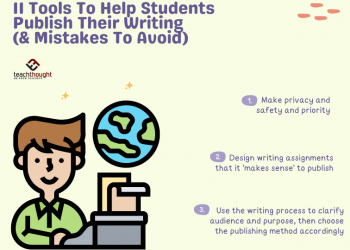No doubt you’ve heard the advice: you can’t go forward looking into the rearview mirror. But those words of wisdom are actually wrong. Only by looking backward can we move forward.
Søren Kierkegaard had it right: life must be lived forward but can only be understood backward.
We need to look backward to learn from our mistakes and free ourselves from the ruts we find ourselves in. Looking backward also helps us understand trends that are fast approaching.
So let’s look back at the recent past and see what we can learn about how we got to where we are today.
If we look rearward, we see that a series of utterly unpredictable developments in the last decade and a half left an indelible imprint on higher education today.
The first was the Great Recession, the financial crisis that began in December 2007. It was the Great Recession that brought mounting concerns over rising tuition and student loans, state cutbacks in higher ed spending, college graduates’ uneven employment outcomes, and return on investment to a head.
The financial crisis also made the academy inescapably aware of a basic fact: that most students had to work while they earned their degree. In addition, the financial crisis made it obvious that colleges needed to establish stronger ties to employers and careers.
In addition, the Great Recession triggered a campus version of the Occupy Wall Street movement, as growing numbers of graduate students and even undergraduates unionized and campus activism intensified, evident in movements to divest from fossil fuels, in unrest among student athletes and fury over campus sexual assaults.
MOOCs themselves were a byproduct of the Great Recession. As tuition mounted and student loan debt soared, the institutions with the greatest resources were under pressure to share their wealth and give back. But because these privileged institutions had no interest in awarding degrees to MOOC takes or disaggregating content or seriously adapting courses to assist those students with the greatest learning needs and because the MOOC providers were supposed to be financially self-sustaining, it was inevitable that MOOCs would not live up to their promise.
Of course, the most important outgrowth of the financial crisis was to accelerate the shift away from traditional humanities fields toward STEM fields.
The great American demographic shift was a second major development with vast repercussions for higher education. In part because of the Great Recession, birth rates fell sharply, as did the number of high school graduates. Not only did the population become much more diverse, but college goers increasingly came from lower-income backgrounds.
The result: a new student majority consisting of part-time students, commuting students, transfer students, working adults, family caregivers, students from economically disadvantaged backgrounds and international students.
A third landmark development was the publication of Academically Adrift in 2010. Disputes over the book’s methodology and findings proved irrelevant. The book convinced many policy makers and opinion shapers that academic rigor was in free fall and that a substantial share of students showed no improvements in critical thinking, analytical reasoning or written communication during their college years.
As influential in its own way as Silent Spring, The Feminine Mystique and Unsafe at Any Speed, Academically Adrift contributed substantially to the growing doubts among large segments of the population about the value of higher education—even as a college degree was becoming a prerequisite for a middle-class job.
A fourth major development was the analytics revolution. For the first time, it was possible to process analyze students’ academic journey, from recruitment through graduation. Enrollment management specialists and student success czars could determine with extraordinary accuracy which students were most likely to enroll, how much financial aid that would require and whether these undergraduates would persist, sustain academic momentum, shift majors, transfer, drop out or graduate—and how much they’d earn postcompletion.
Alongside the analytics revolution cam a series of other ed-tech innovations. Michael Feldstein divides these innovations into three waves, beginning with the infrastructure that supports enrollment management, financial management, human resource management, student information systems and course management.
Wave two consisted of the rise of various intermediaries that provide success coaching (like InsideTrack), arrange internships, enroll international students, recruit stopouts with some college and no degree (such as ReUp Education) and service employers who offer a college education as an employee benefit (like Guild Education). It also includes the online program managers and MOOC providers that partner with colleges to market online degree and certificate programs and the firms that offer boot camps, manage and track certificates and other alternate credentials and host student portfolios.
(Other ed-tech offerings fit uneasily into Feldstein’s framework, like those developers of annotation, citation management, collaboration, student response, text mining and visualization tools that can make a college education more interactive and participatory.)
Wave three, which is now underway, leverages artificial intelligence and machine learning as a replacement for scarce advisers and teaching assistants. Promising examples include autograders, chat bots and degree-planning tools.
The fifth landmark development in higher ed was the 2016 presidential campaign and election, which was at once a product of deepening political polarization and a key contributor to partisan division, inflaming campus protests over diversity, immigration, sexual assault, student loan repayment and, of course, free speech.
We are now, one hopes, at the tail end of the sixth watershed, the pandemic. Whatever its other effects, COVID brought with it a growing acceptance of online learning and student support services. It also intensified a campus mental health crisis and brought this to public attention.
Accompanying the pandemic were the protests over George Floyd’s murder at the hands of police. Protesters demanded equity and launched concerted attacks on symbols of inequality and past discrimination and placed intense pressure on colleges and universities to diversify the professoriate and strengthen diversity, inclusion and antiracism initiatives.
Which brings us to today.
First, let’s look at what didn’t happen. A number of highly touted developments failed to flourish. We didn’t get those glossy etextbooks with interactive animations, advanced simulations and rich multimedia that the publishers promised. Nor did competency-based education, adaptive personalized learning software, $10,000 bachelor’s degree programs or college alternatives such as boot camps and coding academies take off. MOOCs persisted, but only by adopting a new business model: providing certificate programs for existing degree holders or entryways into professional master’s programs. Mega nonprofit online providers, like Southern New Hampshire and Western Governors, grew by leaps and bounds, but it appears that their enrollment largely reflects the decline of such major for-profits as the University of Phoenix.
Instead, students doubled down on traditional education, with double and even triple majors and professional master’s degrees. It seems clear to me that the overwhelming majority of prospective students want something that looks, more or less, like a traditional college education.
Second, as Matthew Yglesias has pointed out, at least some of the outpouring of public outrage over tuition costs was an artifact of Great Recession–induced decline in state higher education funding and the depressed job market caused by the financial crisis. As unemployment rates have fallen, state higher ed spending bounced back in most states. As student loan repayment went into abeyance, interest in alternatives paths into the workforce has subsided.
That said, a sea change has occurred in higher education.
Students and parents came to care intensely about ROI. The popularity of majors that lead directly to well-paying jobs, whether in business, engineering, health care or information technology, shows no signs of slackening.
Despite the movement by some companies and some states to eliminate college for certain jobs, most employers still prefer bachelor’s degree holders. But they favor applicants with certain skills—quantitative skills, facilities with relevant software, project management, marketing or sales skills, and soft skills, including the ability to communicate clearly.
Online learning achieved a degree of legitimacy inconceivable a dozen years ago. But while it seems clear that online learning will dominate the professional master’s market, most undergraduate students apparently want a mixture of in-person and online classes, plus access to online support services 24-7.
Yet major problems persist. Completion rates remain too low and learning outcomes too uncertain. Affordability and employability still present major challenges. Equity in access to resource-rich institutions, high-demand majors and good jobs remains as far off as ever.
What’s different now is that we know what works.
Ask teaching and learning specialists and they’ll tell you that we pretty much know what works pedagogically and that requires relatively low lift. It’s as easy as A, B, C. Here’s my educational innovation alphabet.
A is for Active Learning, the pedagogical practices that actively engage students in learning, including hypothesis generation, brainstorming, sequencing (asking students to order a series of events or developments), decision-making (identifying critical junctures and options), concept mapping, problem solving and role-playing.
B is for Backward Course Design, identifying a course’s learning objectives than aligning learning activities and assessments with those goals.
C is for Cohorting, placing students in learning communities, meta majors or interest groups along with a faculty mentor, dedicated advising and an assortment of co-curricular activities, typically including supervised research experiences, to enhance students’ sense of belonging.
D is for Dynamic Courses with a high degree of interactivity and participation.
E is for Experiential Learning, in which students learn by doing and reflect on the experience.
F is for Flipped Classrooms, in which in-person sessions are devoted to active learning and problem solving.
G is for Gamification, the integration of elements of gaming—such as points, levels and celebrations of achievement—into the learning experience.
H is for the High-Impact Practices that produce higher levels of student engagement and learning, including mentored research and internships.
I is for the Instruction Paradigm, the Industrial-Era transmission model of teaching that has been largely debunked by research.
L is for Learning Analytics, the fine-grained data analysis of data on student engagement, persistence, pace, performance, interactions and self-efficacy moves in order to guide advising and prompt timely interventions.
M is for Metacognition, the process through which students learn how to monitor and assess their own understanding.
N is for Numeracy, the mathematical and statistical skills that have grown increasingly essential in today’s big data environment.
O is for Organization Effect, the value of information students that outlining, integrating and synthesizing information produces deeper and more durable learning than rereading or reviewing the materials.
P is for the Psychosocial Dimensions of Learning, recognition that learning is a social process that is influenced by mind-set and classroom dynamics.
Q is for Quizzing, the use of frequent low-stakes formative assessments to monitor and reinforce student learning.
R is for Rubrics, the criteria by which student work is evaluated.
S is for Standards- or Specification-Based Grading, in which grades are based on whether a student meets a range of detailed expectations.
T is for the Taxonomy of Learning Objectives created by Benjamin Bloom, a hierarchy of six levels of cognition—remembering, understanding, applying, analyzing, evaluating and creating—that moves from recall to synthesis and hypothesis generation.
U is for Universal Design for Learning, an approach to instructional design that gives all students an equal chance to succeed.
V is for Verticles, intentionally designed, coherent, synergistic and optimized routes to a degree and a career.
W is for Wraparound Services, the 360-degree supports for students to meet their academic, financial, mental health and basic needs for food, housing and transportation.
X is for X-Factor Educators, who adapt their pedagogy to meet their students’ diverse needs, seek to bring all students to success and are committed to their social and emotional as well as their cognitive development.
Y is for Year-Round Schooling, modifying the traditional academic calendar to allow students to earn credits throughout the year, not only in the summer but during mini-mesters during semester breaks.
Z is for the Zone of Proximal Development, the learning that a student can achieve with scaffolding from a faculty mentor and capable peers.
This innovation alphabet isn’t complete. I’d also add several other terms:
Authentic Assessment, which evaluates a students’ mastery of knowledge and skills in terms of their ability to solve real-world problems or challenges.
Block Scheduling, which allows students to concentrate their courses in a particular block of time, e.g., morning, afternoon, evening or weekends, to better accommodate their work schedules.
Constructivist Pedagogy, an approach that treats learning as a developmental and reflective process in which learners build on prior knowledge, actively process information, repeatedly practice skills, construct their own frameworks of conceptual understanding and reflect critically on what they have learned.
Corequisite Remediation, a proven approach that accelerates academic momentum by enrolling unevenly prepared students in regular for-credit courses, combined with supplemental instruction, intensive tutoring and study groups, rather than in noncredit remedial courses.
If we know what needs to be done, why don’t we do this? We know why; it’s because of: Inertia. Respect for professors’ autonomy. Students’ dislike of active or team-based learning. Faculty discomfort with technology-enhanced pedagogies. Concerns over content coverage. And more.
What, then, can we do? Let me offer three eminently practical suggestions.
1. Pair faculty members in courses with high DFW rates and substantial performance gaps with an instructional designer.
Course redesign only works with proper faculty support. Preferably this assistance will come from a full-time professional, but alternatively a graduate student or even an appropriately trained advanced undergraduate can be very helpful.
2. Institute supplemental instruction in roadblock courses.
Best practices include:
- Dedicated smaller class sessions targeting students whose performance in early class sessions indicates a likelihood of failure.
- Breakout and discussion sessions.
- Instructor-organized study groups.
- Individual and group tutoring sessions organized by a learning center.
3. Complement existing classes with for-credit offerings that involve alternate forms of learning.
Proven alternatives include project-based classes, studio classes, skills workshops, research experiences, maker spaces and opportunities to work in a faculty laboratory.
If educational innovation is as simple as A to Z, the solution is also straightforward. It’s 1, 2, 3.
Steven Mintz is professor of history at the University of Texas at Austin.
Source by www.insidehighered.com










